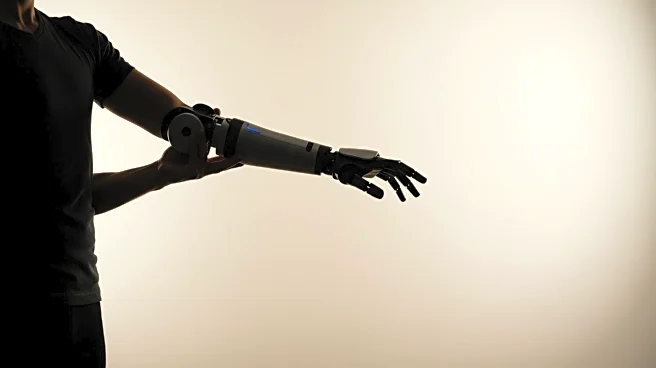What's Happening?
The Rehabilitation Robots Market is experiencing significant growth due to increased adoption in physical therapy, stroke rehabilitation, and mobility restoration. This expansion is driven by the rising incidence of neurological disorders, musculoskeletal injuries, and aging-related disabilities. Technological advancements, such as AI-powered and sensor-integrated robots, are enhancing the effectiveness of rehabilitation programs. The market is segmented by type, including exoskeleton, assistive, and therapeutic robots, and by end-user, with hospitals and rehabilitation centers being primary adopters. North America leads the market, followed by Europe and Asia Pacific, with emerging interest in Latin America and the Middle East.
Why It's Important?
The growth of the Rehabilitation Robots Market is crucial for addressing the increasing demand for effective rehabilitation solutions, particularly as the global population ages. These technologies offer personalized, consistent, and data-driven therapy, improving patient outcomes and reducing therapy duration. The market's expansion is likely to benefit healthcare providers by enhancing patient engagement and offering measurable rehabilitation outcomes. Additionally, the development of home-use rehabilitation robots could increase accessibility and convenience for patients, further driving market growth.
What's Next?
The market is expected to continue expanding, with ongoing innovations in adaptive learning, soft robotics, and brain-computer interface integration. Companies are likely to focus on developing affordable, compact devices for low-resource regions and enhancing remote rehabilitation platforms. Cross-sector collaborations with universities and AI labs may further drive advancements in rehabilitation robotics. As clinical evidence of their effectiveness grows, these technologies are poised to become standard in both hospital and home environments.
Beyond the Headlines
The ethical implications of using robotics in rehabilitation include ensuring equitable access to these technologies across different socioeconomic groups. Additionally, the integration of AI and machine learning raises questions about data privacy and the need for robust security measures to protect patient information. Long-term shifts may include increased reliance on technology-driven healthcare solutions and the potential for reduced demand for human therapists.
















